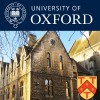Language Ideologies as Urban Infrastructure: A Socio-Spatial Analysis of Identity, Belonging, and Multilingualism in Pune, Maharashtra
By examining the contemporary multiscriptual and multilingual landscape of the city of Pune, Maharashtra, this paper explores the ways language ideologies circulate about Marathi, English, Urdu, and Hindi to illuminate a linguistic infrastructure of the city. Pune is an apt city to explore circulating multilingual ideologies as the city maintains an identity as a stronghold of Maharashtrian history and culture but has also undergone rapid demographic and social change since liberalization in the 1990s, tied to an expansion of the IT industry and as a hub for education. I explore language ideologies, as beliefs about languages and their speakers that motivate behavior, to argue that language is one way that Pune residents organize socio-spatial knowledge of the city and navigate belonging (Schieffelin et al, 1998). Through qualitative ethnographic research from 2016 to 2018, including asking individuals with insider knowledge of a place to draw a cognitive map of Pune to create an intimate view of locations based on layering subjective experiences (Graham 1976), this linguistic anthropological study extends a discussion of the power of both written and spoken language in Pune to socially construct understandings of identity and belonging (Jaffe & De Koning 2015, Lynch 1960). Data includes seven cognitive maps of the city’s socio-spatial linguistic boundaries along with images of signage in three distinct Pune neighborhoods to analyze interlocutor’s making sense of contemporary urban Indian multilingual and multiscriptual space as a cultural category (Duranti & Goodwin 1992, Feld & Basso 1996). Findings indicate the use and broadly circulating knowledge of different languages and scripts in the city coincide with many socio-political identifying features and social stratification through caste categories, socioeconomic statuses, and religious/ethnic backgrounds. Understanding a city’s infrastructure and spatial organization through language guides Pune residents’ experiences of the city and their roles within it.




